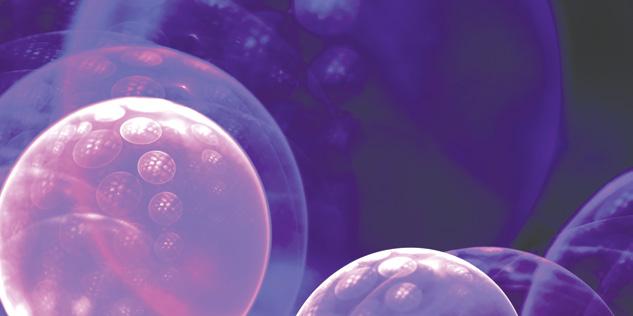YOGA MONTH
YOGA FOR TRAVELERS
SPIRITUAL TOURISM
NAVIGATING MEDICAL TRAVEL OPTIONS
HELPING ANXIOUS KIDS COPE


YOGA MONTH
YOGA FOR TRAVELERS
SPIRITUAL TOURISM
NAVIGATING MEDICAL TRAVEL OPTIONS
HELPING ANXIOUS KIDS COPE

Natural
is a network of natural lifestyle magazine
8
10 TRAVELING WITH PURPOSE
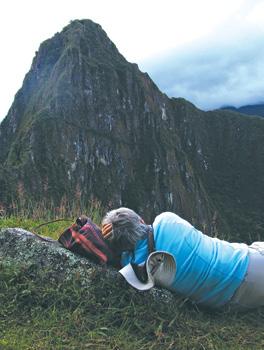
Nine Destinations for Spiritual Enlightenment
14 YOGA ON VACATION
Simple Poses and Tips for Travelers
16 MEDICAL TOURISM

Navigating the Risks and Rewards
20 SAVOR THE PRESENT MOMENT
How to Add Mindfulness to Mealtime



24 STEPHEN COPE on Finding Your Calling
26 HELPING KIDS COPE
Guiding Children Through Trauma and Anxiety
28 UNDERSTANDING
To advertise with Natural Awakenings or request a media kit, please contact us at 267-544-9585 or email Publisher@NABuxMont.com. Deadline for ads: the 5th of the month.
Email articles, news items and ideas to: Publisher@NABuxMont.com Deadline for editorial: the 5th of the month.
Submit calendar events online at NABuxMont.com Deadline for calendar: the 5th of the month.
Advertise your products or services in multiple markets! Natural Awakenings Publishing Corp. is a growing franchised family of locally owned magazines serving communities since 1994. To place your ad in other markets call 239-206-2000. For franchising opportunities call 239-206-2000 or email Natural Awakenings@KnoWEwell.com.
16
For the last 50+ years I have noticed red, green and blue dyes being added to our drinks, foods and snacks. To me it’s just common sense, but it does not feel right to be putting these and other chemicals on my skin, hair and in my body. What is now in milk to enable an expiration date a month after we buy it? Why do we continue distribution of products, drinks and foods in the USA that have been rejected by Europe because they contain banned chemicals, some even linked to cancer?
To me, it’s common sense that natural and organic is healthier than chemically treated. Homegrown is preferred. Growing fruits and vegetables here in America is more desirable—the more local, the better—as is seasonal rather than year-around from all over the world. It fractures my mind to think that preservatives are in my best interests.
My beliefs and thoughts have led me to understand that everything is still my responsibility. My health is one of the most important aspects of living, and yes, it’s my responsibility.
Having open heart surgery at the age of 47 triggered a process of learning. I became a vegetarian for over 12 years, then went to chicken as my only meat, then back to vegetarian. Now, a plant-based diet is what I follow. After reading the China Study I became convinced that my diet, what I put into my body, must be tied to facts and good common sense. For the most part, I think I have taken good care of myself, though improving is always the driver.

What I haven’t paid enough attention to is sugar. I knew to watch it, but it’s hidden in everything, so it’s somewhat challenging to track. On the edge of diabetes, I am now focused and committed to paying attention to sugar, empty carbohydrates and eating with intention.
I continue to study the effects of sugar and where it hides in my dietary choices to make common sense adjustments. Sugar is a hook—who doesn’t like sweet? But the amount of sugar in our everyday diet, in most cases, is over the top. Who eats a quarter cup of cereal? I am shocked at how much sugar or added sugar yogurt with fruit contains, bread, juice, soda (I do not drink), the sheer amount we consume in a day, a week and a month. The facts are in, and it’s clear our society is on the wrong path.
As I approach January and my 80th year, my health is paramount to my goal of living a disease-free life. It just makes common sense to me to stick around as long as I can, and in order to make that goal, I must be responsible to me and for me. To reach my goal of 102 in good shape and tootling around in my Google-driven car, good health is the key.
In peace, love and laughter,
Publisher Joe Dunne
Publisher@NABuxMont.com • 908-405-1515
Managing Editor Kathy Tarbell Kathy@NaturalAwakeningsNJ.com
Contributing Writer Kiki Powers
Layout Design Melanie Rankin
Sales & Marketing Joe Dunne
Digital Marketing Kristy Mayer
Accounting/Billing Asta Dunne Asta@NaturalAwakeningsNJ.com
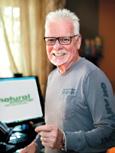
CONTACT THE PUBLISHER
Joe Dunne
Cell: 908-405-1515 • Fax: 239-920-5147
Publisher@NABuxMont.com NABuxMont.com
Visit our Facebook page for the latest health updates and information, or to post your events and comments.
Natural Awakenings BuxMont
CEO Kimberly B. Whittle
National Editor Sandra Yeyati
Editor Brooke Goode
Copy Editor/Proofreader Melanie Rankin
Design & Production Gabrielle W-Perillo
National Advertising Lisa Doyle-Mitchell
Natural Awakenings Publishing Corporation 350 Main Street, Suite 9B Bedminster, NJ 07921 Ph: 239-206-2000
NaturalAwakenings@KnoWEwell.com
© 2023 by Natural Awakenings. All rights reserved. Although some parts of this publication may be reproduced and reprinted, we require that prior permission be obtained in writing.
Natural Awakenings is a free publication distributed locally and is supported by our advertisers. Please call to find a location near you or if you would like copies placed at your business.
We do not necessarily endorse the views expressed in the articles and advertisements, nor are we responsible for the products and services advertised. The content herein has not been evaluated by the Food and Drug Administration and is not meant to treat, diagnose, cure or prevent any condition. Statements are the opinion of the author/speaker. Check with a healthcare professional regarding the appropriate use of any treatment.
Natural Awakenings is printed on recyclable newsprint for the environment.
Learn from Inspiring Speakers: Peter Singer, Rich Roll, Dr. Ron Weiss, Dr. Dean Sherzai, Dr. Ayesha Sherzai, Dr. Columbus Batiste, Dr. Meagan Grega, Sara Farley, Bob Quinn, and Brittany Jaroudi Enjoy





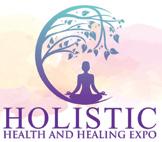
Sunday, October 15 is a date you’re going to want to mark in your calendar! Natural Awakenings is excited to bring another Holistic Health and Healing Expo to the Philadelphia area. This preeminent, goto resource for natural wellness, spiritual awakening, and green living expo will be held at The Drexelbrook, 4700 Drexelbrook Drive, Drexel Hill, Pennsylvania.

Free and open to the public, this event will run from 11am to 5 pm. With typically 4,000 plus visitors, attendees to the expo can expect hundreds of vendors, exhibitors and practitioners to be on-hand offering an amazing array of products, treatments and the latest, cutting-edge approaches in natural health and sustainable living.
Join with other like-minded individuals tor a day of fun and inspiration learning the newest trends in holistic health, spiritual practices, and green living. Whether relaxing with some personalized therapies, discovering new pathways to wellness for the whole family, from kids to pets, or finding that one-of-a-kind special gift, transformative experiences await all under one roof.
With delicious and healthy food and snacks available, be sure to bring friends and family and spend the whole day!
For more information, go to HHHExpo.com. See ad, page 7.
Ft Lauderdale area-based Balance for Life Retreat has partnered with the world-class Wyndham Deerfield Beach Resort to create three all-inclusive programs from October 8 to 14, 15 to 21 and 8 to 21, designed for lifestyle health rejuvenation, stress management and weight loss. Included in the one- and two-week sessions are fun fitness classes, education, an exclusive beach and time for spa pampering and exploring the Deerfield Beach and Ft. Lauderdale.
Guests can select a tailored program from options including water fasting, juice cleansing and nourishing plant-based lifestyle reboot, all under the guidance and support of Balance for Life director Dr. Frank Sabatino, DC, Ph.D. He will present daily in-person wellness talks focused on healthy lifestyle goals, as well as in-depth guidance on food, nutrition, healthy weight management and more. Each guest is instructed, monitored and guided through the programs by Dr Sabatino.
Bring a friend and save 50 percent on their registration when booking double occupancy.
Location: 2096 NE 2nd St., Deerfield Beach, FL. (For more information and bookings, call 954-947-5888, email Info@BalanceForLifeFlorida.com or visit BalanceForLifeFlorida.com. See ads on pages 13 and 15.

The introduction of 5G mobile phones and infrastructure has given rise to concerns about their safety, as more than 1 million new antennas will be required in the U.S. Currently, the Federal Communications Commission and International Commission on Non-Ionizing Radiation Protection consider only the thermal effects (tissue heating) from electromagnetic frequency (EMF) exposure as potentially harmful.
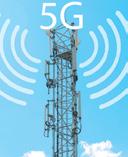
Alex photohub/ShutterStock.com
A group of researchers led by Ariel University, in Israel, evaluated the non-thermal effects of exposure to EMF radiation on biological systems and human populations by reviewing in vitro [outside a living organism] and in vivo [inside a living organism] studies, as well as clinical studies on electromagnetic hypersensitivity and the epidemiological evidence for cancer due to the action of mobile-based radiation exposure Although data derived from these studies was inconsistent, the researchers found supporting evidence that this radiation may contribute to cancer, endocrinological, neurological and other adverse health consequences. The researchers call for a more targeted, interdisciplinary research effort by national governments to ensure public health.
Long COVID affects nearly 14 percent of adult patients that had COVID-19. It is characterized by symptoms lasting at least 12 weeks after the initial infection, including fatigue, brain fog and breathlessness. Although there is no standard treatment for this clinical diagnosis, researchers in the UK are currently studying the impact of acupuncture on this lingering condition, as the practice has been successfully used to treat similar symptoms associated with other ailments.
The randomized trial began in 2022 and is expected to collect data from 160 participants until the year 2025. Participants with long COVID are selected if they have a fatigue score greater than five on the COVID-19 Yorkshire Rehabilitation Scale. The experimental group will be offered weekly 15-minute acupuncture treatments for six weeks, while the control group will receive no acupuncture treatments. Both groups will be required to complete questionnaires on their general physical and mental fatigue at baseline and at two, six and 12 weeks. Throughout the study, both groups will be provided with general advice on managing their symptoms. As reported by NBC News, the participants receiving acupuncture so far “do seem to be responding” positively to the treatments, according to Dr. Imogen Locke, a clinical oncologist at the Royal Marsden Hospital, in London, who is leading the study.

In a new systematic review and meta-analysis published in JAMA Pediatrics, researchers found that children’s physical activity has been greatly reduced by the COVID-19 pandemic. The researchers looked at data from 22 studies that included 14,216 participants ranging from 3 to 18 years old. The data showed that children’s total daily physical activity decreased by 20 percent (17 minutes), irrespective of pre-pandemic baseline levels, and the reduction was larger for higher-intensity physical activity. This reduction represents almost one-third of the daily dose of moderateto-vigorous physical activity recommended for young children and adolescents.
These effects are largely due to social distancing policies and related school closures, which affected 1.5 billion youth worldwide. Under lockdown, children no longer had access to regular physical activities, recreational facilities or outdoor recess, and online learning increased sedentary screen time, disrupting healthy habits. Physical activity affects not only physical health, but also psychosocial functioning and mental well-being.
The study’s results align with another meta-analysis showing that the pandemic increased the prevalence of youth depression and anxiety symptoms, highlighting the tremendous challenges that public health officials face to revive young people’s interest in physical activity since the pandemic.



Sucralose is an artificial sweetener 600 times sweeter than table sugar. The U.S. Food and Drug Administration has approved its use in baked goods, beverages, chewing gum, gelatins and frozen dairy desserts. A recent study conducted by scientists at the University of North Carolina found that ingesting sucralose may cause the formation of a genotoxic chemical called sucralose-6-acetate. Genotoxicity refers to the breaking up of DNA, resulting in damage that could potentially contribute to health problems. Researchers also found trace amounts of this dangerous chemical in sucralose itself, even before it was consumed and metabolized.

The study included eight projects that exposed human blood cells to sucralose-6-acetate, which researchers found induces the expression of genes associated with inflammation, oxidative stress and cancer. Exposure to certain concentrations of sucralose-6-acetate and sucralose also appeared to impair the gut lining, and sucralose-6-acetate inhibited certain enzymes, which could interfere with the body’s ability to metabolize medications.
The Expo’s low-pressure, social environment allows you to network with like-minded people and businesses, creating a community and building connections to share gifts and knowledge with others.






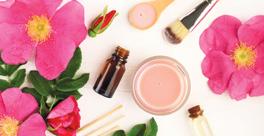
Space-based solar power (SBSP) is the concept of collecting solar energy during a space orbit and beaming it safely to a fixed point on Earth. Recently, the British government sponsored an SBSP competition to award more than $5.5 million in grants to the most promising innovators of this novel technology, which may be the key to producing cost-effective, cleaner, more renewable energy. The goal is an array of spacecraft to collect sunlight and convert it into microwaves before beaming them to a receiver on Earth, where it is converted into electricity.
Because space has no atmosphere, the sunlight is undiluted, which means that a space-based solar panel would be able to generate more energy than a comparable panel on Earth. The other potential benefit to collecting solar power in space is that there are no day-night cycles, cloud cover or seasonal variations to contend with.
Among the grant winners were two British schools: Cambridge University, which is developing ultra-lightweight panels that can withstand high radiation levels, and Queen Mary University, which is working on a wireless system to safely beam the energy to Earth. In related research, scientists at the California Institute of Technology were able to successfully transmit power wirelessly in space and to beam detectable power to Earth using an experimental spacecraft.
In Sanskrit, Ayurveda translates to “the science of everyday living,” and it is one of the world’s oldest systems of medicine. Offering a holistic path for cultivating health and well-being, Ayurveda promotes balance and harmony with the use of natural herbs, plant-based medicines and spices.
According to a recent comprehensive research report by Market Research Future (MRFR), the worldwide Ayurvedic products market size is expected to grow from $12.6 billion in 2023 to $31.8 billion by 2032. MRFR analysts ascribe this impressive growth to increased availability and public awareness of such goods, as well as a deepening distaste for the adverse side effects of conventional medicines and products.
Demand for Ayurvedic cosmetic products is also on the rise, according to the same MRFR report. Supporting the idea that outer beauty reflects what is going on inside the body, beauty brands like Kama Ayurveda, RANAVAT and Forest Essentials are expanding into the global sector. Their increasing popularity follows broader trends toward organic and natural medicines and “clean beauty”, as well as increasing awareness about toxic ingredients in some Western products. Ayurvedic components have been used recently to balance Western formulas. For instance, in skincare, sandalwood is added as an antioxidant, and turmeric is combined with topical retinoid medications to reduce irritation.

As temperatures rise due to global warming, scientists are worried about how extreme heat may impact heart health. Research published in the Journal of Applied Physiology warns that air temperatures as low as 93° F may lead to a steady increase in heart rate under humid conditions. This increase, referred to as cardiovascular heart strain, can occur even before a person’s internal temperature starts to rise.
The study involved healthy participants engaging in light physical activity inside an environmental chamber. As the chamber got hotter, participants’ heart rates increased and then plateaued. However, when the chamber continued to heat up, heart rates began to rise again and continued to rise even after the experiment. This rapidly increased heart rate indicates cardiovascular strain.
A related study published in Physiological Reports reported that even at rest, heat can affect the heart. Researchers found that at 50 percent humidity, the heart rate of participants at rest was, on average, 64 percent higher at 122° F than at 82° F. These findings are concerning, as extreme heat events are becoming more common around the world and could be lethal for vulnerable and older populations.

Researchers from Japan and Germany are developing eco-friendly light devices that use a single layer of organic film mixed with light-emitting materials and an electrolyte. These light-emitting electrochemical cells (LEC) are gaining attention due to their simplified structure and because they consume less energy and cost less than the organic light-emitting diodes (OLED) currently on the market.
The research team is using molecules called dendrimers, new organic materials that can extend the life of LECs. The electrolyte in an LEC can be made from inexpensive materials, such as biomass-derived cellulose acetate, a compound used in clothing fibers and eyeglass frames, whereas OLEDs use rare or heavy metals. Researchers are also using graphene, a single layer of carbon atoms, as the electrode. While the progress is exciting, the developers of this new lighting technology note that more research is needed before it goes to market in order to make the devices brighter and capable of illuminating in three primary colors.
Every day, hummingbirds must drink nearly their body weight in nectar to survive. Most hover above their food by beating their wings up to 80 times a second and inserting their beaks into the tubes of flowers. As they consume their food, grains of pollen stick to their foreheads, pollinating the next flowers they encounter.
Scientists from the University of Connecticut recently identified 66 species of hummingbirds that may be harvesting nectar without pollinating flowers by using tiny toes to cling to a nearby branch rather than hovering above. These birds, which have a longer hallux claw to hold on to a stem and a shorter beak to get in closer, are able to save energy and obtain nectar from previously inaccessible flowers by poking into the side of the flower tube. This method, however, appears to prevent pollination from occurring.

travel by virtue of their natural beauty, or due to some historical, mythological or religious significance. For a trip that fosters mind-body-spirit self-care with a generous portion of adventure, check out these sacred sites.

Mount Shasta
Amy Wilinski/SpiritOfTheOwl.comThroughout history, humans have embarked on pilgrimages in pursuit of wealth, good fortune, divine intervention, spiritual enlightenment and other blessings. These journeys could be considered the earliest manifestations of one type of adventure travel, while today some of these would be defined as spiritual tourism.
The notion of “spirit” refers to both our conscious and subconscious minds. A spiritual practice, then, is any activity that enables us to step away from the noisy parade of life and explore our emotions, where any concept of the human spirit resides. This spiritual self-care includes any ritual or practice that helps connect us with our most authentic higher self.
Travel can be an amazing way to explore metaphysical interests with new people, sites and scenes, in order to invigorate the senses, stimulate the imagination, refresh the mental framework and invite new ideas and personal insights. Some places qualify for spiritual
This Northern California treasure is believed to be a powerful spiritual vortex that has long captured the imagination of spiritual seekers. By some accounts, Mount Shasta is reputed to be the Earth’s root chakra, in keeping with the belief that, like the human body, planet Earth possesses chakra energy centers.

This majestic mountain, which is associated with healing, transformation and spiritual awakening, is a stunning backdrop for the many spiritual retreats and workshops offered locally that include meditation, energy healing, yoga, sound therapy and other restorative modalities.
Spiritual guide Andrew Oser, who has led Mount Shasta retreats for decades, says, “I can help you allow Mount Shasta’s transforming energies into the core of your very being, and by utilizing my direction to harness the mountain’s heightened vibration, you will feel it almost magically dissolve all of your fears.”
Surrounded by red rock canyons, whimsical forests and waterfalls, Sedona’s natural beauty inspires spiritual reflection. It is also part of one of the most powerful energy vortexes in the world and a New Age Mecca for those seeking transcendence through energy healing, yoga, sound baths and a host of other spiritual offerings.
From venturing to the bright turquoise waters at Havasu Falls nearby to visiting the Chapel of the Holy Cross, there are many activities in Sedona for those wishing to connect more deeply to nature and themselves.

Known as the “Island of the Gods”, Bali is a captivating destination with a serene, spiritual ambiance. Nestled amidst lush greenery and terraced rice fields, the town of Ubud, in the uplands of Bali, enjoys international recognition for its spiritual offerings and welcoming vibe for those

seeking inner peace and self-discovery.
Holistic healing options in Bali include energy therapies, sound healing and traditional Balinese massage. Yoga enthusiasts will be delighted with the varied class options, immersive programs and specialized workshops. Along with wellness spas offering rejuvenating treatments that harmonize the body, mind and spirit, Bali offers beautiful meditation areas for quiet contemplation.
the Amazon jungle. Machu Picchu has long been a revered site, and historically the place for worshipping the sun, the main Inca deity. Seekers can explore Machu Picchu on their own or participate in guided spiritual meditations—either way, it is a beautiful destination for a mind-bodyspirit getaway.

For those seeking a deep mystical experience, Peru Sacred Tours provides a safe haven for spiritual advancement with the individualized attention and guidance of indigenous practitioners, including the herbalist shamans of the rainforest, Q’ero Inca priests of Cuzco or Moche San Pedro shamans of Chiclayo.
Spirituality runs deep in the Peruvian culture, from the ancient temples of the Incas to the living history of shamanism in
Egypt is considered a land of majesty and mystery, attracting treasure hunters, history buffs and adventure seekers, as well as those searching for spiritual transformation. This world-renowned destination

Phil Cousineau, author of The Art of Pilgrimage: The Seeker’s Guide to Making Travel Sacred, specializes in creating meaningful travel experiences and leading tours to sacred sites. “All pilgrimages are a search for meaning and purpose, which is why I prepare groups on how to travel deliberately, ways to experience it and how to integrate the experiences into daily life so they are not forgotten,” he says.
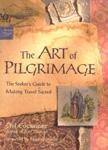
Cousineau recommends getting off the bus, putting away the video recorder and simply walking into the landscape. “Remind yourself why you traveled to there,” he says. “Take the deepest, most probing question in your life with you. Chronicle your answer for two to five minutes daily. At the site, look for one detail that represents your entire visit that day and take a photo. Use active imagination to open your heart, rather than waiting for something to happen. Don’t compare your travels. When you are comparing where you are with where you’ve been, there’s no meaning—it becomes just one more purposeless tour.”
To share the experience with traveling companions, Cousineau says, “I begin mornings over breakfast with a long conversation that includes any stories about where we’re visiting. We’re reminding ourselves that we’re forming a small community by traveling together and studying the same stories so that we can continue our long conversation over dinner. This is where the meaning starts to form and deepen.”
has a long history of spirituality, with a colorful tapestry of beliefs and practices. The ancient Egyptians were convinced of the existence of a spiritual plane, while also maintaining deep reverence for the natural world, and these concepts continue to inform contemporary Egyptian culture and spirituality.


In recent years, there has been a surge in demand for spiritual tours in Egypt, particularly for meditation workshops in iconic places like the Great Pyramid of

Giza, Valley of the Kings, Mount Sinai and Nile River. One of the more well-known tour guides is Freddy Silva, a leading researcher of ancient civilizations, sacred sites and their interaction with consciousness, as well as the bestselling author of The Divine Blueprint.
Varanasi may be the world’s oldest city, settled more than 4,000 years ago. Located on the banks of the Ganges River, it



is regarded as the spiritual heart of India, with a tradition of Hindu mythology, as well as Buddhism. Religious, humanist and secular visitors frequent the evening aarti ceremony, when sadhus [sages] show their devotion by raising flaming lamps amid the aroma of incense.
If this strikes a chord, renowned author and spiritual teacher Andrew Harvey is offering a 14-day pilgrimage to the artistic, historical and spiritual soul of North India in November. He is the founder and director of the Institute for Sacred Activism, an international organization that inspires people to take up the challenge of our contemporary global crises by becoming effective, practical agents of institutional and systemic change.
Imbued with the rich heritage and history of Zen Buddhism, this enchanting city is an ideal destination for seekers to explore close to 2,000 Shinto shrines and Buddhist temples, as well as the iconic Golden Pavilion, where centuries of devotion and wisdom have been housed. Many of these sites also provide inspiring settings for quiet contemplation, meditation and discussions of The Buddha’s teachings.
The traditional tea ceremony offered at numerous venues around the city is a refreshing, meditative practice that cultivates a sense of tranquility and connection to the present moment. Kyoto is also home to exquisite Japanese gardens that illustrate the profound relationship between nature and spirituality in this gentle culture.

As there are many sacred sites in Italy, a guided experience or well-planned itinerary may help facilitate an immersive spiritual journey. This is a labor of love for Phil Cousineau, author of more than 40 books, teacher, editor, independent scholar, documentary filmmaker, travel leader and storyteller. His lifelong fascination with art, literature and history of culture has taken him on journeys around the world.
Author of The Art of Pilgrimage: The Seeker’s Guide to Making Travel Sacred, Cousineau has stated, “To shine the light of your own natural curiosity into the world of another traveler can reveal wonders—to remember the mysteries you forgot at home. What matters most on your journey is how deeply you see, how attentively you hear, how richly the encounters are felt in your heart and soul.”
In partnership with Sacred Earth Journeys, Cousineau has prepared a guided tour in November entitled The Sweet Life of Mythic Italy, which will explore sacred locations in Rome, Perugia, Assisi, Montepulciano, Florence, Verona and Venice. To learn more, visit Tinyurl.com/ SweetLifeTour.



piece of prehistoric engineering remains shrouded in mystery to this day. There is further spiritual charm in myths around the purpose of Stonehenge. People ask, “Was it intended as a funeral monument, an astronomical observatory, a tool to predict the seasons or a sanctuary where the sun was worshipped?” Stonehenge is believed to be an epicenter of Earth energy with as many as 14 ley lines converging on the site—powerful channels
of energy associated with places of ancient and primordial significance.

It is plain to see that when we are ready to invest in our spiritual well-being in a fun, mind-expanding way, many mindbody-spirit travel options abound.




Kiki Powers is a health writer, blogger and national speaker specializing in plant-based nutrition and healthy green living. Learn more at RawKiki.com.
Every year, more than a million people make the spiritual voyage to Stonehenge, in Wiltshire, England. Archaeologists are still seeking a plausible explanation as to how the stones weighing multiple tons were transported to the site. This ancient master-

lifestyle health rejuvenation, stress management and weight loss. Choose from rejuvenating options including invigorating water fasting, refreshing juice cleansing, and nourishing plant-based meals meticulously prepared by our Chef to support your wellness goals. All under the guidance and support of our director, Dr. Frank Sabatino, DC, PhD.

Don’t miss this incredible opportunity to revitalize your mind, body and spirit in a serene and nurturing environment right on the beach.

Travel can broaden our perspective of the world and take us on breathtaking adventures. These new experiences, however, often come with unexpected mental and physical challenges, stresses and anxieties. By incorporating yoga into the itinerary, we can cultivate a sense of peace, allowing us to show up as our best selves. From asanas after long hours of sitting to breathing exercises while waiting for a flight, yogic techniques can open the body and mind, letting us enjoy both the journey and destination.
According to Jenny Kaufman, a Chicagobased yoga professional who leads international retreats and manages yogaview, in Wilmette, Illinois, a mindful yoga practice is different from stretching and is available for anyone, regardless of physical flexibility. “Yoga encompasses well-being, mindfulness, breathing and spiritual awareness. It leads you to pull inward, notice what and where you feel a sensation, and mindfully progress to another asana, or pose. Increased flexibility might be the byproduct of the practice, but that is not the point,” she explains.
“Long layovers, changing time zones and different foods can confuse nal clocks and wreak havoc on sleep and digestion,” Kaufman says. She recommends some poses to mitigate disruption and bring renewed vigor to body and mind: “To wind down before bed, incorporate cooling postures, such as Seated Forward Bend and Child’s Pose, that encourage the body to fold in and rest. For a burst of energy, try warming poses and heart openers, such as Cobra, Sphinx and Backbends. If space is limited, stand with fingers interlaced behind the back and gently press the pelvis forward. If digestion is slowed, simple twists and Wind-Relieving Pose can help move things along.”
Kim Larkin, a New Jersey-based certified yoga teacher, leads international retreats as a way to share heart-opening cultural adventures with other curious beings. “My main practice when travel stress is creeping in is to drop my attention into my breath,” she says. “Just focusing on one breath cycle at a time will help to settle my attention into my body, begin to quiet my nervous system and bring me to a more grounded place. It can also be helpful to count the breath, as in Sama Vritti Pranayama or “box breathing”. Like a square, box breathing has four even-
length parts to it. Inhale to a count of four or five; hold the inhale for the same count; exhale to four or five; and hold at the bottom of the exhale. Repeating this as needed helps to calm both the mind and body.”
Margi Young, an Oakland, Californiabased yoga instructor and retreat leader, says, “When traveling, it’s natural to want to jump into a busy schedule of exploring new destinations, but starting the day with a few conscious breaths and Sun Salutations can set the foundation for a more grounded experience. This allows you to be your best self and move through your journeys with less anxiety and fresh eyes. Or, get off the traditional yoga script and take a few minutes to put on your favorite tunes and dance to get into your body.”
Young also recommends incorporating yoga throughout the day while traveling to reset from any physical and mental stress. “In an airport, find a secluded place you feel comfortable doing a Downward Dog. Instead of putting your hands on the ground, you could put them on the seat of a chair. This grounding pose lengthens the spine, opens the shoulders and draws your attention inward,” she explains. “On a plane or bus, reaching your arms overhead gives space to condensed organs; ankle circles help increase circulation; and seated Figure Four opens up tight hips,” she advises.
If time allows, Young also suggests finding a yoga studio and popping in for a class. “Taking a yoga class in a new country or city can provide an immediate sense of community and is often a uniting gateway to other connections when navigating new and different surroundings,” she asserts.
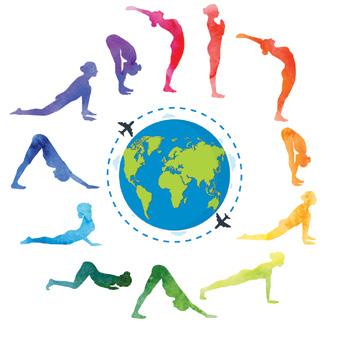
Yoga helps to develop patience, an aptitude that Kaufman says can serve us throughout our travels. “Mindfully moving through a practice encourages us to listen and be patient with our bodies, and it provides valuable feedback on where we are and what we need. Instead of jumping into a deep stretch, purposefully encourage the hamstring to open up and notice how that feels. Cultivating that patience for ourselves changes the chemistry in your brain and becomes a microcosm for how you put yourself into the world. You’re able to be more patient with flight attendants, travel partners and everyone else you may encounter,” she shares.





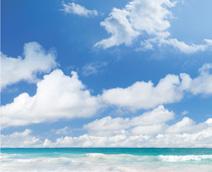

For Larkin, practicing yoga while traveling cultivates inner peace. “The stress of travel can bring out the worst in us, but we can do our best to stay kind and considerate by keeping in mind the yoga teaching of Ahimsa: non-harming,” she says. “Most things work out, even if you lose your luggage or miss your flight. And most people are good, wanting to help you find your luggage or rebook your flight or commiserate when your vacation didn’t go quite to plan.”
Carrie Jackson is a Chicago-based freelance writer. Connect at CarrieJacksonWrites.com.


 by Sheila Julson
by Sheila Julson
Many Americans have experienced sticker shock upon receiving a medical or dental bill, whether or not they have health insurance. As healthcare costs continue to rise in the United States, patients are grabbing their passports and turning to medical tourism—the act of crossing borders to obtain quality medical care at a lower cost.
“We have a great healthcare system in the United States, but it is priced out of the market for millions of people at the bottom of the economic pyramid,” says Josef Woodman, CEO of Patients Beyond Borders, a medical tourism resource. He estimates that to date, 2.1 to 2.4 million Americans have intentionally crossed borders specifically for medical care. Approximately 65 percent of those people sought complex dental treatments.
The town of Los Algodones, Mexico, located just over the U.S.Mexico border near Baja California, has approximately 300 dental clinics. Known as “Molar City”, the town is a mecca for people looking for more affordable dentistry. U.S. travelers also head to Costa Rica, Turkey and Thailand for elective cosmetic surgery, bariatrics, infertility treatments, orthopedic medicine, cardiology and cancer care, or to obtain low-cost pharmaceuticals.
Add holistic treatments to the list, says David G. Vequist IV, Ph.D., the founder and director of the Center for Medical Tourism Research at the University of the Incarnate Word, in San Antonio. “People are very interested in how Asian countries naturally combine both alternative and traditional medicine. Philosophies like ‘food as medicine’ are commonly used in treatments there,” says the 15-year scholar of medical tourism trends.
According to Vequist, “The best Mexican hospitals are using the same standards that we have in the U.S.” In 2009, for example, when Mexico’s General Health Council set out to create national hospital certification standards in their country, officials followed protocols established by Joint Commission International, an influential U.S.-based nonprofit that has served as a global driver of health care quality improvement and patient safety for the past 20 years.
Nevertheless, it is important to understand that complications may arise during a healthcare procedure regardless of where it is performed. Vequist cautions that the farther a patient travels from home, the more likely they will be exposed to bacteria that is unfamiliar to their body. Also, traveling in a pressurized airplane after complex surgical procedures should be avoided, and seeking medical care outside of a patient’s regular care network may break the continuum of care, leading to miscommunication and errors in the transfer of medical records.
“Although global health care isn’t for everyone, those who try it will find the quality is the same or better than at home, with modern facilities at a fraction of the cost,” says Paul McTaggart, founder of two specialized travel agencies—Medical Departures and Dental Departures—that help patients become informed about the best and most appropriate clinics and doctors around the world
for their medical needs. They also book appointments, forward medical records and make travel arrangements.
McTaggart vets medical providers outside of the U.S. by verifying doctor credentials with local regulatory authorities; measuring web reputations; conducting onsite inspections when possible; posting authentic, patient-verified reviews; removing partners that consistently receive poor reviews; and checking the web for legal and other claims against hospitals or clinics.
Woodman advises that extensive research of foreign hospitals, clinics and providers is crucial for a positive medical-tourism outcome and cautions against making a decision based solely on cost. “There are some bad actors out there that advertise mostly on price to attract U.S. patients. If a clinic advertises that you’ll save 80 or 90 percent off U.S. healthcare prices, be wary—that’s way too high of a discount.”
Other red flags include clinics that are located in strip malls or a lack of verifiable credentials for a provider. “A medical tourist needs to be a little more adaptable and critical of their surroundings,” Woodman says, adding that even if they’ve made the trip, when the circumstances seem off, a patient should never feel pressured to go through with the treatment or procedure.

Jonathan Edelheit, president of the Medical Tourism Association, recommends using healthcare providers that are certified or accredited by international organizations like Global Healthcare Accreditation. “Be careful of trusting any website,” he warns. “Some medical tourism facilitators are middlemen or agencies that receive a commission. Some will refer you to the best provider, but some will refer you to a provider that provides the largest commission, but who isn’t the best.”
Edelheit believes that with proper research and planning, costeffective, quality health care is possible. He reminds travelers to avoid countries where the U.S. Department of State has issued a travel advisory, and he recommends speaking with several patients that have gone through the same procedure to get a firsthand review and manage expectations. He asserts, “The value you receive and being able to immerse yourself in another culture and integrate a vacation is something that most medical tourists treasure and cherish.”
Science proves pure copper kills germs fast.
CopperZaps® are made of pure copper, shaped to reach bad germs where they gather in your nose. The inventor has gone 11 YEARS without a cold. Now many thousands of people use CopperZaps.

Pure copper is scientifically proven to kill germs by touch in seconds, including viruses, bacteria and fungus.
Use a CopperZap against:
Colds, Flu, Covid.
Sinus trouble from germs, Cold sores or fever blisters, Canker sores that get infected, Mold allergy, Warts, Ringworm
Sleep loss due to Congestion
Pink Eye and Styes
Infected sores or skin lesions
That’s why ancient Greeks and Egyptians used copper to purify water and heal wounds. They didn’t know about germs, but now we do.
Cuts or wounds getting infected
Getting sick after Air Travel
The National Institutes of Health, the EPA and the American Society for Microbiology vouch for the power of copper to kill germs, including antibiotic- resistant ones.
Users say:
“It works! I love it!”
“Is it supposed to work that fast?”
“One of the best presents ever.”
“Sixteen lights and not a sniffle!”
“Cold sores gone!”
“The kids all got sick, but not me.”
“I am shocked! My sinus cleared.”
“Best sleep I’ve had in years!”
Longtime users say they haven’t been sick in years. Less stress, less medical cost, more time to enjoy life.
Independent scientists placed millions of viruses on copper. “The viruses started to die literally as soon as they touched it,” said head scientist Dr. Bill Keevil.
The handle is curved and textured for maximum contact with your fingers and hands in case you touch things a sick person touched and pick up their germs. EPA tests show copper works just as well when it is tarnished. Easy to clean. Easy to use. Comes with Directions. Use over and over again. Never wears out. 90-day Money-back Guarantee. Top BBB rating. Price $79.95. Get $10 off each with code NATA37. See CopperZap.com or call 888-411-6114 toll-free.
Live people answer 9-4 Pacific on business days. Statements not evaluated by FDA. Not claimed to diagnose, treat, cure or prevent any disease.
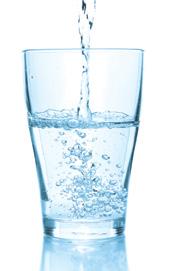 by Dr. Frank Sabatino, D.C., PhD.
by Dr. Frank Sabatino, D.C., PhD.
By definition, water-only fasting means the abstinence from all food and liquids except water for some extended period of time. I myself have fasted thousands of people over the past 45 years for a wide variety of health concerns, and there is an extensive body of evidence supporting the use of wateronly fasting in a wide range of health problems, including obesity.
The loss of appetite and fasting are natural to all animals, including humans, in response to disease and stress. If you observe animals in the wild or even your own house pets, you will notice that when they are injured or diseased they will often retire to a quiet and comfortable place, stop the intake of all food and continue drinking water only. When less energy is required for eating, digesting and procuring food, more energy is available for healing and repair.
When you stop eating, blood sugar levels begin to drop, and the body is forced to satisfy its blood sugar and energy needs with protein in our muscles and fat in our fat cells. There is more protein metabolism and lean muscle breakdown in the first few days of fasting, but within a few days, protein loss begins to slow down as the body shifts to fat metabolism. The ketones produced by fat metabolism in the fast are used directly by the brain as the primary source of energy during extensive periods of fasting.
The loss of protein and the depletion of blood sugar is more comfortably regulated by ensuring that the fasting person maintains maximum rest. In fact, it is important to see fasting as a deep physiological resting process.
In fasting, the body shifts from, a typical phase of growth to a phase of energy conservation maintenance and repair. As evidence of this, the insulin-like growth factor (ILG-F), which is abnormally increased by eating refined foods and animal products and can promote cancer and tumor growth in adults, is reduced during fasting.
Not only is fat an available energy reserve in the body, but it also serves as a vehicle for the storage of waste and toxic fat-soluble chemicals that we are routinely exposed to. Many of the environmental toxins, and even internal toxic waste products, are typically dissolved in our fat cells. So not only do fat cells of the body provide a primary source of energy, but they also work like a garbage dump, hiding and storing our toxic load.
The energy that is harbored in the fasting process can enhance the mobilization of waste stored in body fat and remove this waste through organs and tissues of elimination like the skin and lungs in a process of detoxification. In fasting, the body demonstrates an
intelligent control over the processes of detoxification and elimination. So that the body will utilize what it needs least to provide support for organs it needs most and through autophagy, a process of self-digestion and housecleaning that is increased in fasting, it can dissolve tumors or cysts and support the vital organs of the body.
What makes fasting even more beneficial is that while many pathological conditions are improved, there is also significant fat and weight loss, as much as one to two pounds a day. I have had people lose 20 pounds in two weeks of fasting, and as much as 30 pounds or more in a month.
Fasting is not a mystical process. Although it has been used by a variety of spiritual traditions as a tool for introspective evaluation and spiritual growth, fasting is truly just a simple process of deep physiological rest. The goal is to harbor as much energy as possible for the healing work at hand. That means rest on every level, including all the senses. The more time spent being quiet, serene and introspective, the better. For this reason, fasting is also a profound tool for creating a more mindful, self-aware life, and resolving compulsive addictive behavior.
Fasting promotes fat breakdown, weight loss, detoxification and repair like nothing else, and is one of the most powerful approaches for resolving inflammation and the complications of autoimmune disease. The body-mind changes evoked by the fasting process make it one of the most efficient and powerful tools to jumpstart any new health program in general, and a significant and successful long-term weight loss program in particular.
Dr. Frank Sabatino is a chiropractic physician with a Ph.D. in cell biology and neuroendocrinology from the Emory University School of Medicine. He is the author of the book WEIGHTLESS: Compassionate Weight Loss for Life and the online course: Lean for Life: The Science of Effective Weight Loss. He serves on the medical advisory board of the T. Colin Campbell Center for Nutrition Studies and is the Director of Health Education for The National Health Association as well as a research consultant for the True North Health Foundation and the Complementary Medical Association (CMA) in England.
Balance for Life Florida is a retreat center where people can experience supervised water-only fasting. Call 954-947-5888 or visit BalanceForLifeFlorida.com for program and reservation information. See ads on pages 15 and 13.
“In
 – Dr. Griffin
– Dr. Griffin








preparing,” Pierce says, adding that calm focus can even help us when shopping for ingredients at the farmers market or grocery store.
There is a sharp difference between grabbing a fast-food burger at the drive-through and paying full attention to a home-prepared meal. For many of us, busy schedules and harried lifestyles get in the way of a more introspective dining experience. Mindful eating—the practice of slowing down, appreciating the present moment and becoming consciously aware of the ingredients, flavors, aromas and textures that we consume—can be a worthwhile meditative endeavor.
“If we’re mindful of what we eat, when we eat and how we eat, we are supporting the vibrancy of what our bodies are so capable of,” says Dr. Carrie Demers, medical director at the Himalayan Institute, in Honesdale, Pennsylvania. “Studies show

that when people stop to sit down and chew their food carefully, they not only eat less, but they actually get more enjoyment out of their meal. Food tastes better when we are actually present with it.”
“When we slow down, we become more aware,” says Shawngela Pierce of Seek Within You, who leads spiritual retreats in Sedona, Arizona. “Sometimes people eat out of habit, but when we become more mindful, we start to notice patterns that, once understood, can help us harness a whole new way of eating and living.”
Mindfulness can begin before we even sit at the dining room table, “when we aren’t distracted by watching television or something else, and we take the time to think deeply about what we are
The Ann Wigmore Natural Health Institute, in Aguada, Puerto Rico, offers a mindful eating class that invites diners to practice with a bowl of Ann Wigmore’s Energy Soup—a recipe by the institute’s founder containing an array of vegetables, legumes and grains. “It’s fulfilling, nutritious and cleansing, all in one,” says Executive Director Carolyn Marin. “Key in what makes this a mindful eating meal is that while it is pulsed in a blender, it is not a liquid, and it requires chewing. Also, it is served at room temperature, which helps with mindful eating and proper digestion.”
While soft music plays in the background, students of the mindful eating class are instructed to slowly pick up their spoons, place a serving of soup in their mouths, set their spoons down and unhurriedly chew 30 times. “They look out at the ocean, breathing carefully, eating consciously and slowly, taking their time and getting their body out of fightor-flight mode and into healing mode. It can be very emotional,” Marin explains. “Mindful eating also aids in digestion because the person is chewing the food fully and allowing it to spend more time in the mouth, where digestion begins. Many of our guests have experienced noticeable improvement with acid reflux, stomach aches and nausea.”

Marc Demers, head chef at The Himalayan Institute, says there are four aspects of mindful eating—right food, right time, right quantity and right attitude or environment— each of which can be individualized and honed to deepen awareness and improve health. Here are his recommendations.
RIGHT FOOD: Eat fresh, whole foods that are easy to digest and give energy. We need mindfulness to notice which foods support us and which cause indigestion, mucus or fatigue.
RIGHT TIME: Our bodies naturally digest better in the daytime and when we feel hunger. Stop eating at least three hours prior to bedtime. We need mindfulness to notice the difference in digestion between eating ice cream at 3 p.m. and at 11 p.m.
RIGHT QUANTITY: Eat just the right amount of food—enough to feel satisfied and fuel the day’s activities, but not so much that we feel lethargic or sleepy. Mindfulness helps us notice our hunger and fullness, as well as how we feel after we eat.

RIGHT ATTITUDE OR ENVIRON-
MENT: Sit down in a peaceful place, ideally with people we like, rather than eating while driving, working or walking. Don’t eat when stressed or angry. If we are upset, it is better to take a moment to mindfully breathe and calm the nervous system before eating. The goal is to welcome the food with gratitude and openness.
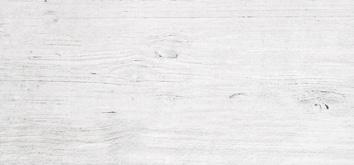
For those struggling to commit to mindful eating, Pierce says, “Start practicing mindful eating with the food that you enjoy the most. Don’t try to do it all at once. Just try one meal each week as a start. Make it a priority. Set a reminder if it helps. Have fun with it. Make it a playful practice. Say, ‘Today is going to be my mindful eating day.’ That opens the gateway to something that will become an integral part of your spiritual life.”
Veronica Hinke is a food historian and author of The Last Night on the Titanic: Unsinkable Drinking, Dining and Style and Titanic: The Official Cookbook. Learn more at FoodStringer.com.
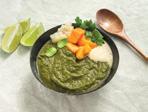
Priceless lifetime, life-changing whole health bene ts for less than the cost of a smoothie a week!
This recipe by Vincci Tsui, a dietician and intuitive eating counselor in Calgary, Canada, can inspire mindfulness because it requires chopping, dicing and cubing ingredients, which can be methodical and meditative activities. In terms of eating the salad, the numerous flavors and textures provide ample opportunity to engage the senses and be present with the food.
YIELD: 4 TO 6 SERVINGS (6 CUPS)
8 oz orzo
1 19-oz can chickpeas, drained and rinsed (about 2 cups cooked)
1 pint grape tomatoes, halved
1 large English cucumber, chopped
1 red bell pepper, chopped
1 bunch green onions, chopped
1 cup chopped basil
7 oz feta, cut into ½-inch cubes
¼ cup red wine vinegar
2 Tbsp lemon juice
1 tsp honey
1 tsp dried oregano
½ cup olive oil
Salt and pepper to taste
Cook the orzo according to the package directions. Drain and rinse with cold water. Set aside.
Meanwhile, make the dressing by whisking together the red wine vinegar, lemon juice, honey and oregano until honey is dissolved. Slowly whisk in olive oil. Season with salt and pepper to taste. Set aside.
In a large bowl, mix together cooked orzo and remaining salad ingredients. Add in dressing and toss to coat.
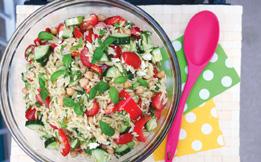
Recipe and photo courtesy of Dietician and Certified Intuitive Eating Counselor Vincci Tsui.
This soup has several properties that facilitate mindful eating. It is served at room temperature, loaded with diverse ingredients and pulsed, rather than liquified, allowing for purposeful chewing, attentive tasting and proper digestion. The liquid base includes cabbage rejuvelac, a fermented, bubbly probiotic resembling unsalted sauerkraut juice that restores electrolytes, B vitamins and gut balance.
YIELD: 2 TO 4 SERVINGS
½ cup cabbage rejuvelac (recipe below)
1 cup non-starchy vegetables such as zucchini, yellow squash, radishes, beets, carrots, celery or cucumbers, chopped

1 cup non-bitter, leafy greens or herbs, chopped
1 Tbsp seaweed
1 Tbsp lentil or pea sprouts
6 cups sunflower microgreens
2 cups buckwheat microgreens
1 Tbsp grated ginger
1 cup papaya, chopped
1 fresh lime, cut into wedges
6 cups red or green cabbage, chopped
3½ cups filtered or spring water
To make the rejuvelac, use a blender to purée the water and cabbage. Pour the mixture into a glass jar, cover and store in a room that is 74°F or warmer for 3 days. Open and close the lid of the jar once each day to release air.
To make the soup, use a blender to combine the rejuvelac, vegetables, seaweed and sprouts, pulsing so as to not over-blend, and slowly add the micro greens. Pour into bowls and add ginger, papaya and lime juice. Serve at room temperature.
Can be stored in the refrigerator for 2 to 3 weeks.
Unresolved oral inflammation contributes to systemic disease and illness. Dental risk factors remain one of the most overlooked aspects of health and wellness. The Lanap & Implant Center has utilized an integrative biohealth methodology for accurate diagnosis and treatment for over 25 years.
Our solutions include:
• Biocompatibility testing, health risk assessment
• Incisionless, same-day tooth replacements utilizing titanium or zirconia implants
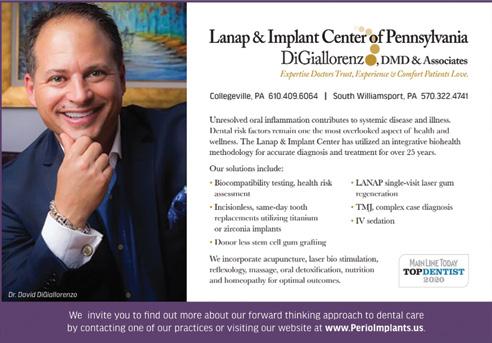
• Donor less stem cell gum grafting
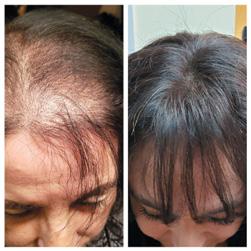
• LANAP single-visit laser gum regeneration
• TMJ, complex case diagnosis
• IV sedation
We incorporate acupuncture, laser bio stimulation, reflexology, massage, oral detoxification, nutrition and homeopathy for optimal outcomes.
to hold together the net at that point. This introduces the view that each of us has a responsibility to contribute our gifts in such a way that we hold together our little piece of the net. If we don’t, the net starts to unravel. Dharma is Sanskrit for sacred vocation or sacred duty, which comes from the root dhri, “to hold together”. It’s this fascinating notion that we have a responsibility to our own idiosyncratic genius, which sustains not only us by providing a fulfilling life, but also the whole world by taking care of our corner of the world.
Specializing in the relationship between Eastern contemplative traditions and Western psychology, Stephen Cope has been a scholar-inresidence for more than three decades at the Kripalu Center for Yoga & Health, the largest residential yoga center in North America. He also founded the Kripalu Institute for Extraordinary Living, a global network of scientists that researches the effects and mechanisms of yoga-based practices. Cope is a classically trained pianist, dancer and psychotherapist, as well as the bestselling author of Yoga and the Quest for the True Self, The Wisdom of Yoga and The
Great Work of Your Life. His latest book is The Dharma in Difficult Times: Finding Your Calling in Times of Loss, Change, Struggle and Doubt.

In classical yoga, there’s a view that everybody has a vocation. The earliest myth that supports this dates back several thousand years to the Vedic tradition in India and involves the god Indra, who is said to have cast a vast net over the entire universe. At each vertex of this net there’s a gem, and that gem is an individual soul whose job is
The practice of yoga and meditation is about increasing our connection with the subtle, internal world. Thoreau called it the distant drummer. While our culture constantly draws us out and distracts us, Eastern contemplative traditions invite us to quiet our monkey mind and listen inside to that still, small voice that is attuned to our deepest needs and to the way the world works. It’s that awake, or enlightened, part of the mind that can connect you to your true calling.
There are three questions that people can ask themselves.
First: What lights you up? This is an energetic experience in our bodies when we come close to the occupation or endeavors that are important to our soul. Get familiar on a day-to-day basis with what lights you up, then slowly move toward those things and integrate them into your life.
Second: What duties do you feel called to? I don’t mean those onerous things that are imposed on us by our culture. I mean a
duty that if you don’t do it in this lifetime, you’ll feel a profound sense of regret and self-betrayal.

Third: What problems or difficulties are you facing in your life right now? Difficulties can point you to something that might be your dharma. Marion Woodman, a good friend and feminist who was diagnosed with bone cancer in her mid-60s, decided to close her psychoanalytic practice and devote the rest of her life to being in relationship with the cancer, investigating it as her calling. Very often, somebody’s calling is something really difficult they’re experiencing, like an unhappy marriage or dissatisfaction in career, and their dharma is to investigate what this means for their life.
Robert Frost stepped off a series of smaller curbs that added up to a cliff. He was concerned, as we all are, about security, making money and keeping his family safe, so he became a teacher. But there was a point
at which he had to give up teaching and follow this deep voice that said, “Poetry is your calling.” He was 38 when he made the final decision to let go of other sources of income, and when he did that, his poetry came alive.
In the Bhagavad Gita [Hindu scripture], there are four pillars of dharma. The first is discernment—finding your calling in this lifetime. The second—the doctrine of unified action—is to bring everything you’ve got to whatever you decide is your calling. Third is to let go of the outcome, also known as relinquishing the fruit. The ancient yogis discovered that if you’re grasping for a particular outcome, it takes you out of the moment and into some future fantasized moment. By letting go, you empower yourself to be more present to the possibilities of the moment. The fourth pillar is to turn the whole process over to God or to something bigger than just yourself. My friends who don’t believe in a higher power or god understand
that concept of dedication to the planet, to humanity or to all beings.



Very hopeful. The contemplative traditions discovered that human beings who were jivanmukta, or soul-awake, were special versions of human beings in that they had capacities of compassion, lovingkindness, joy, generosity and selflessness. Those qualities, which are developed in the practice of yoga and meditation, add to the common good. I’m hopeful that as we become everything we can be, we will have the capacity to solve some of the huge problems that we have. As reckless as we are these days with our world, human beings have very often risen to the challenge of complex dilemmas and resolved them. As we come together, we start manifesting unified action. The power of human beings working together for the common good is almost limitless.

 by Carrie Jackson
by Carrie Jackson
and to ask for help, the less power fear and anxiety will have over their brains.”
According to Dr. Carol Penn, author of Meditation in a Time of Madness: A Guidebook for Talented Tweens, Teens, Their Parents & Guardians Who Need to Thrive, “Fear is a natural phenomenon. It’s how we’re hardwired to survive as a species. However, when fear turns into anxiety and the body enters a chronic state of hyperarousal with raised cortisol levels, it can be debilitating. This shortens attention spans and disrupts the hypothalamic loop, which deals with creating short-term memory, causing kids to lose the ability to engrain long-term learning.”
Children today are facing ever-increasing amounts of stress and anxiety. In addition to academic pressure, bullying and family dynamics, kids are worried about navigating social media, climate change and school shootings. While a certain amount of stress is normal and healthy, too much can cause debilitating physical, emotional and cognitive effects.
A 2010 study published by the National Scientific Council on the Developing Child, at Harvard University, reports that persistent fear and chronic anxiety can have lifelong consequences by disrupting the developing architecture of the brain. Parents can help anxious kids by modeling stress-management and problem-solving techniques, and inviting their children to talk about their feelings.
While each child’s anxiety is unique, the themes are often universal. “Children fear not being liked, being made fun of, failing when they try new things, getting hurt, losing a loved one, being left out and not fitting in. If this list seems familiar, it’s because they are all the same fears adults have too,” says Michelle Nelson-Schmidt, an author and illustrator of 32 children’s books, including What If I Know My Feelings? and The Whatif Monster series “It is debilitating when we don’t talk about our fears and anxieties. Children often don’t have the vocabulary to verbalize their fears, so they bottle it up, letting fears get bigger and scarier. The earlier they learn that it’s okay to be scared, to talk about their fears
Penn notes that kids can pick up on their parents’ anxiety, so it is imperative to model self-care and create a soothing home environment. “Children are unsettled when their parents are unsettled. By observing body language and energy, kids can intuitively gauge when something is wrong, and they often make up stories about why,” she explains. “Teaching kids to take regular breaks throughout the day for relaxed awareness encourages them to notice a mind-body connection. Take two minutes before getting out of the car or starting a new activity to pay attention to your breath and observe and label pain or tension in the body. If you are hunching your shoulders or clenching your jaw, make mindful adjustments to reset and settle the body and nervous system.”
Last year, Highland Park, Illinois, experi-
enced the improbable yet possible event of a mass shooting during their Fourth of July parade. “While the community worked to rediscover a sense of safety, our school focused on the necessary structures and initiatives to help students heal and rebuild,” says Holly Fleischer, the assistant principal of diversity, equity and inclusion at Highland Park High School. “As we started the school year, we recommitted to a focus on social-emotional learning by teaching strategies to manage emotions, sustain healthy relationships, develop an awareness of self and make healthy decisions. By practicing coping skills with everyday stressors, our students are learning to develop feelings of control, safety and resiliency as they navigate a traumatic experience or event.”
According to Fleischer, “While there is little control of one’s outside world and circumstances, kids can find calm in a storm through strategies like deep breathing, recognizing your five senses, listening to music, reaching out to loved ones, using ice packs for sensory intervention and giving oneself a strong bear hug. Students will get to know which ones work for them. It is also essential to disrupt maladaptive coping mechanisms like avoidance, which do not allow for the practice of these healthier ways of self-management.”
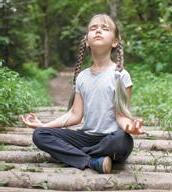


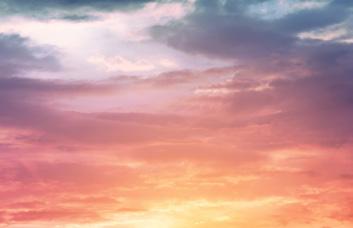
“Thoughts are the language of the mind, and feelings are the language of the body,” Penn counsels. “When stress develops, have kids draw three pictures identifying
what it looks like for them. The first is a picture of themselves right now; the second is the challenge they’re facing; and the third is how they will feel when the challenge is resolved. This gives children control over their feelings, allowing them to self-soothe and creatively work through challenging situations. When children learn to be adaptable, flexible and imaginative critical thinkers, they can respond to even the darkest days and move forward with grace and hope.”

At Montana’s Medicine Rock State Park, visitors have a rare opportunity to look up at the night sky and see an awe-inspiring display of planets and constellations, as well as the Milky Way, our spiral-shaped galaxy that contains about 100 billion stars, according to the National Aeronautics and Space Administration. It is a magnificent sight, but those of us that live in or near cities with artificial lights beaming out of buildings and cascading over parking lots and highways may never get the pleasure.
“Because of light pollution, up to 80 percent of people living in North America are unable to see the Milky Way where they live,” says Sabre Moore, executive director of the Carter County Museum, in Ekalaka, Montana. “Medicine Rock State Park is designated as an International Dark Sky Sanctuary, and the Carter County Museum has committed to safeguarding it in perpetuity.”
The park’s sanctuary certification was issued by the nonprofit International DarkSky Association, based in Tucson, Arizona, with a grassroots network throughout the world. The organization offers five dark-sky designations based on stringent outdoor lighting standards and relies on the help of community stakeholders, such as Moore, who serves as a volunteer darksky preservation advocate. At Medicine Rock, she helps host sky-parties for people
to enjoy the celestial show and learn about the negative impacts of light pollution.
The skies around cities are hundreds, if not thousands, of times brighter than they were 200 years ago, according to 2017 research published in Science Advances. In addition to robbing us of the Earth’s nocturnal skyscape, outdoor illumination negatively affects many plants and animals, including humans. Human-made lighting threatens approximately 30 percent of nocturnal vertebrates and 60 percent of nocturnal invertebrates, and it “is increasingly suspected of affecting human health,” writes scientist Christopher Kyba, lead author of the report.
The mechanisms by which these life forms are affected vary. For example, when birds migrate, they fly into buildings that are lit up at night. Scientists estimate that at least 100 million bird deaths in the United States annually are related to light pollution. “Bobcats and bats rely on the cover of darkness for their survival and are also being affected,” says Moore, adding that artificial light interrupts human circadian rhythms, thereby affecting our REM [rapid eye movement] sleep, which is vital for our well-being. The flight patterns of night-
active insects are disrupted by outdoor lighting, which partially explains their declining numbers worldwide.
It is possible to reduce these negative impacts, as the Sea Turtle Conservancy has proven. By getting people to modify the positioning and types of lights used in buildings along Florida and Texas beaches, the nonprofit has been able to rescue loggerheads, leatherbacks and green sea turtles from the brink of extinction.
Female turtles have evolved to instinctively lay their eggs on the beach, allowing the hatchlings to emerge at night and head toward the light of the horizon into sea. Humans, however, have interrupted this natural course with artificial light emanating from the windows of high-rise condominiums, garden spotlights and outdoor lamps.
“When hatchlings erupt out of their nests in the middle of the night, the bright horizon today is in the direction of the land. They go the wrong way into roads, parking lots, swimming pools or dunes, where they are run over by cars or subject to predation,” explains David Godfrey, executive director of the conservancy.
Researchers have discovered that lights with longer wavelengths that are amber,
orange and red in color do not disturb the turtles, as opposed to outdoor fixtures that emanate shorter-wavelength blue and white light. According to Godfrey, the good news for these sea creatures is, “LED can be programmed to emit the specific wavelength you want.”
The conservancy works with coastal counties, beachfront property owners and others to switch to turtle-friendly lighting, and the National Fish and Wildlife Foundation often provides grants to pay the retrofitting costs. As a result, Godfrey reports, there has been increased nesting in areas with changed lighting and greater survivorship by the hatchlings.
“We are saving tens of thousands of hatchlings every season, and homeowners are seeing a reduction in their utility bills. People love it. They’ve found the longer wavelengths are more pleasing to the eyes,” Godfrey asserts. “Since we know that light pollution affects various other forms of wildlife and humans, the managed use of lighting at night is something that everyone should pay attention to.”
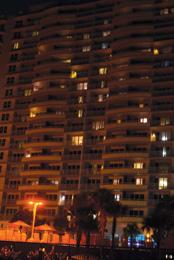
n Avoid blue-light fixtures.
n Turn off unnecessary lights in the evening.
n Use dimmers, timers and motion detectors.
n Close curtains and blinds at night to stop indoor lights from beaming to the outdoors.

n Visit Lights Out: Recovering Our Night Sky, an exhibit at the Smithsonian National Museum of Natural History, in Washington, D.C. (NaturalHistory. si.edu/exhibits/lights-out).
n Get involved at GlobeAtNight.org, a citizen-scientist group that monitors light pollution.
n Support dark-sky designated areas (Tinyurl.com/DarkSkyPlace).
Sheryl DeVore is a frequent contributor to national and regional publications and has authored six books on science, health and nature. Learn more at SherylDeVore. wordpress.com.
All calendar events for the October 2023 issue must be received by September 10 and adhere to our guidelines. To submit, visit NABuxMont.com/pages/calendar or email Kathy@NaturalAwakeningsNJ.com for a submission form.
Holistic Health and Healing Expo – 11am5pm. This outstanding expo is the go-to resource for natural wellness and green living. Now accepting vendor and speaker applications. The Westin Hotel, 555 Fellowship Rd., Mt Laurel Twp. For more information, contact Shae Marcus at 856797-2227. HHHExpo.com.
sunday
SATURDAY, SEPTEMBER 9

Intro to Working with Crystals – 1:302:30pm. Learn the best crystals to start with, what crystals might be right for you right now on your spiritual journey, and how to use them in your daily life. $30. Whole Body Yoga Studio, 103 E. Walnut St., North Wales. 215-661-0510. WholeBodyYogaStudio. com/workshops.
Ethos Farm Days Festival 2023 – Sep. 9-10. Food is medicine, for us, our community, our land, our planted. Learn what you can do to help heal yourself and the planet. Inspiring Speakers and fun activities for rthe entire family. Tickets: EthosFarmProject/FarmDays. Use Code FDNA10 for 10% Off. Festival is at 177 West Mill Rd. Long Valley, NJU. For informationm contact 908-867-0060 or inquiry@ ethosfarmproject.org. EthosFarmProject.org.
TUESDAY, SEPTEMBER 12
New Solutions For Chronic Joint Pain – 12:30-2pm. Spots are limited and registration is required! Lunch and Learn presentation begins at 12:30 pm so please arrive a few minutes beforehand to find our office and grab your seat. Lunch will be provided. Call our office today to reserve your spot! Free. Dr. Lachman & Associates, 1432 Easton Rd, Warrington. 267-406-0782. DrLachman.com.
SATURDAY, SEPTEMBER 16
Greencastle Annual VetFest – 11am-4pm. A celebration of the local Veteran community. Greencastle, 100% veteran-owned and entirely veteran-operated consulting firm, gives back to veterans. Event features 40 vendors ranging from food trucks to veteran non-profits to breweries to vendors selling crafts and more. Live music from veteran musicians, children’s activities like bounce houses, a children’s obstacle course and yard games like giant Jenga, cornhole and
much more. Free to attend. Free to park. Rain or shine. Greencastle, 400 Chesterfield Parkway, Malvern. For information, visit VetFestPA.com.
SATURDAY, SEPTEMBER 23
Restorative Yoga & Sound Healing –1-2:30pm. A blissful afternoon of live sound healing including gongs, crystal sound bowls, and bells, while being led in a luxurious restorative yoga practice accompanied by essential oils. $45. Whole Body Yoga Studio, 103 E. Walnut St., North Wales. 215661-0510. WholeBodyYogaStudio.com/ workshops.
TUESDAY, SEPTEMBER 26
New Solutions For Diabetes – 12:30-2pm. Spots are limited and registration is required! Lunch and Learn presentation begins at 12:30 pm so please arrive a few minutes beforehand to find our office and grab your seat. Lunch will be provided. Call our office today to reserve your spot! Free. Dr. Lachman & Associates, 1432 Easton Rd, Warrington. 267-406-0782. DrLachman.com.
Cat Yoga – 7-8pm. A donation based yoga class with cats to support a local rescue, give these adoptable kitties some love and attention, and to have a little fun with your yoga practice!. Donation. Feline Frenzy Thrift Shop & Adopt, 107 S. Main St, North Wales. 267-797-2045. WholeBodyYogaStudio. com/workshops.
Full Moon Groove Dance Class & Yoga Nidra – 7:30-9pm. A 60 minute Groove movement & dance class followed by a 30 minute Yoga Nidra guided meditation to integrate the movement and the Full Moon into your body. . $35. Whole Body Yoga Studio, 103 E. Walnut St., North Wales. 215-661-0510. WholeBodyYogaStudio.com/workshops.
300 Hr YTT - The Art & Science of Assisting Skillfully – 6-9:30pm. Learn to assist masterfully in this course designed to increase teachers’ confidence and students’ engagement, stability, and alignment. We’ll review exceptional languaging, verbal cues, and assists for 26 primary postures. $430. Whole Body Yoga Studio, 103 E. Walnut St., North Wales. 215-661-0510. Pranakriya.com/ register/assisting-at-whole-body-yoga.
monday
Prenatal Yoga Classes – 6-7pm. Designed to nourish expectant mothers during their journey, students will learn to connect with their own innate wisdom, body, and growing baby. Strengthen pelvic muscles, improve circulation, and increase comfort. $25 per class/ $130 for 6 classes. Whole Body Yoga Studio, 103 E. Walnut St., North Wales. 215-661-0510. WholeBodyYogaStudio. com/class-descriptions/north-walesprenatal-yoga.
wednesday
Beginner Yoga 101 Series – 7:30-8:45pm. A 6-class series over 3 weeks for beginner yogis. You’ll learn the basics from the ground up. Includes a pass for 2-weeks of unlimited yoga and barre classes. $120 for 6 classes. Whole Body Yoga Studio, 103 E. Walnut St., North Wales. 215-661-0510. WholeBody YogaStudio.com/workshops.
Your local source for natural health, nutrition, fitness, personal growth, green living, creative expression and the products and services that support a healthy lifestyle
Jeffrey L Griffin, DC
252 W Swamp Rd, Ste 26, Doylestown 215-348-2115 • C4NH.com
Dr.griffin@c4nh.com
Life is full of symptoms stemming from just one cause…MEN!
Mechanical, Emotional and Nutritional Stress. Well-studied, documented and very treatable provided the cause is known. That’s where we come in. Let our 37 yrs of experience help you begin feeling better today! Free phone consultation available when you mention Natural Awakenings magazine! See ad, page 19
David DiGiallorenzo, DMD
Henry Hsu, DMD
184 W Main St, Collegeville
610-409-6064 • PerioImplants.us
Providing oral health solutions through holistic, biologically compatible and organic practices. One of the world's most accomplished centers for periodontal and implant care, which integrates wellness services into their therapeutic approach. Experience with immediate total tooth replacement with metal-free dental implants, treating gum disease with LANAP, a no-cut, no-sew method of treating gum disease, comfortable gum grafting with PRGF, implant denture solutions, and chronic pain management. See ad, page 23
Jeffrey L Griffin, DC
252 W Swamp Rd, Ste 26, Doylestown 215-348-2115 • C4NH.com
Dr.griffin@c4nh.com
Feeling poorly? Lacking answers? Frustrated by your health issues? I understand and want to help. Mention Natural Awakenings magazine and receive your exploratory phone consultation with Dr. Griffin completely free of charge. New patients welcome!


See ad, page 19
201-731-3530
TheHairForLifeCenter.com
For over 35 years The Hair For Life Center has been helping women who experience hair loss. In as little as 2 to 3 hours we restore your hair to its natural state safely without using glues or extensions. For more information, visit at TheHairForLifeCenter. com. See ad, page 23

Lachman and Associates
Julie Lachman, ND LLC


1432 Easton Rd. Suite 3G, Warrington 267-406-0782 • DRLachman.com
Lachman and Associates is a full-service integrated practice. Our naturopathic doctor is an expert in chronic, difficult and autoimmune diseases. She also supports those with diabetes, hormonal and menopausal concerns. Our medical team specializes in non-surgical arthritis care as well as non-surgical facelifts. Voted “Best in Bucks County for Family Medicine”.
Joan Summers, Certified Gestalt Coach, Trauma Professional and Reiki Master 267-272-9343 • StepIntoJoyHealingArts.com
Joan@StepIntoJoyHealingArts.com
Experience deep and long-lasting healing. Joan offers healing for her clients who are tired of feeling stuck, disconnected or without purpose. She offers Gestalt Life Coaching, Equine Gestalt Life Coaching and reiki, and you may choose to customize your session.


Linda Harbaugh, Intuitive Medium
Certified Life Coach/Reiki Practitioner
Linda@JourneyToTheSelf.com
JourneyToTheSelf.com • 484-904-9268
Delivering messages of love and guidance from deceased loved ones and spirit guides via readings and intuitive reiki sessions. A certified life coach, Linda also offers intuitive coaching packages to help you navigate life, jobs and relationships. Psychology degree, former teacher, 30 years business experience. Telephone or in person.
Joan Summers, Certified Intuitive Reiki Master and Gestalt Coach

267-272-9343 • StepIntoJoyHealingArts.com
Joan@StepIntoJoyHealingArts.com
Experience peace of mind, enlightened awareness and physical restoration. The connections between physical pain and emotional trauma are often revealed during an intuitive reiki session. It is a practice of compassion and spiritual connection. See ad, page 27

103 E Walnut St, N Wales 215-661-0510
WholeBodyYogaStudio.com
